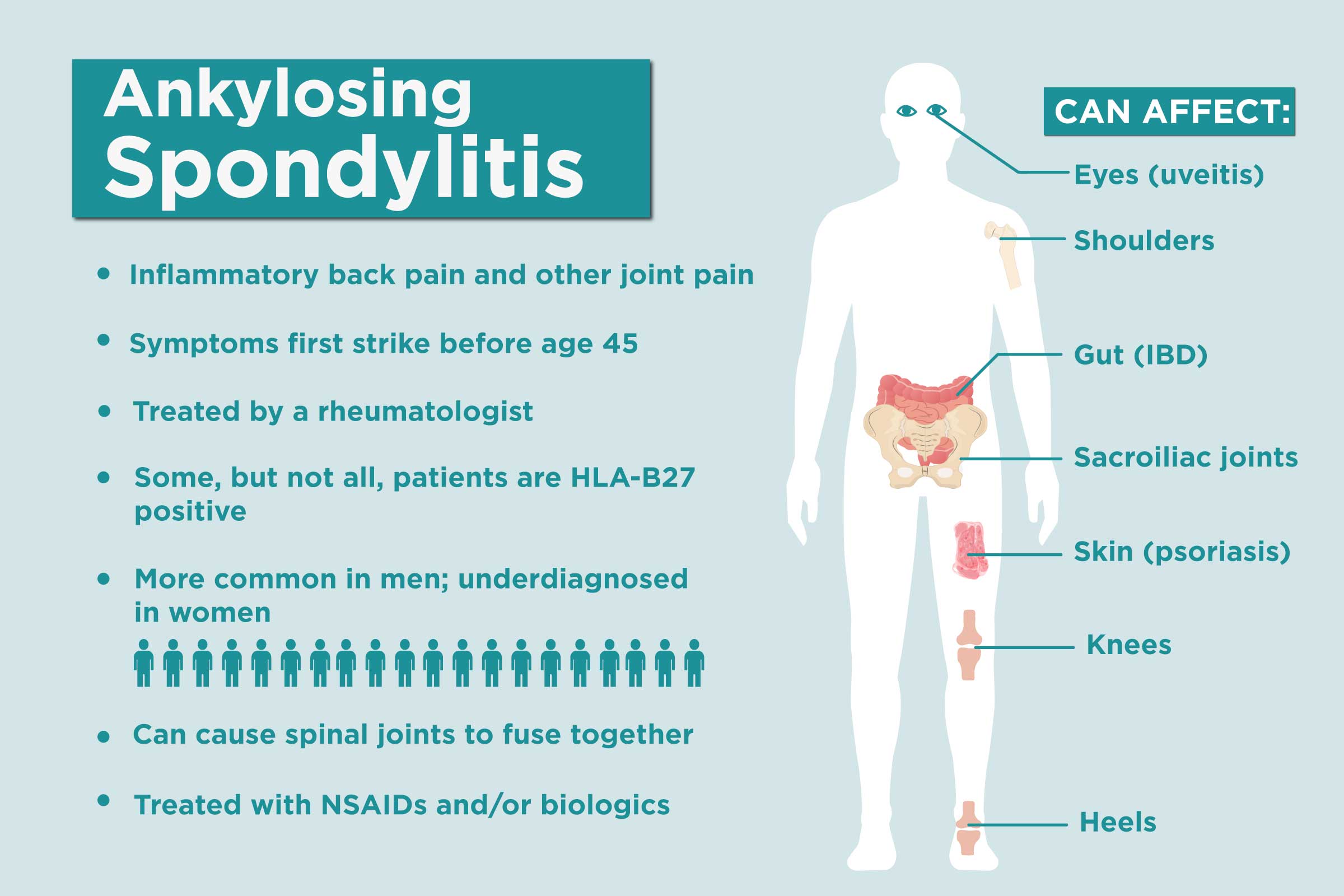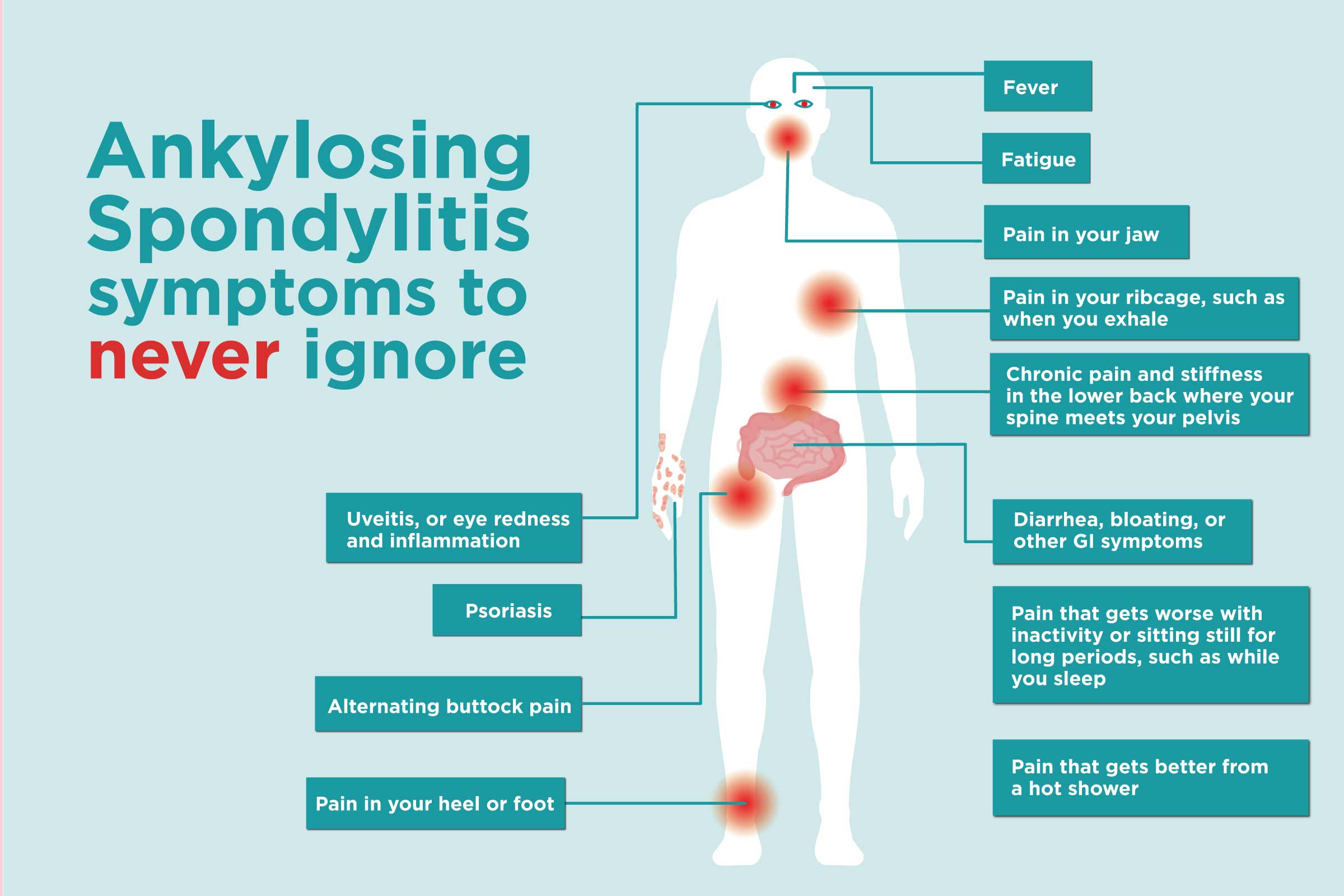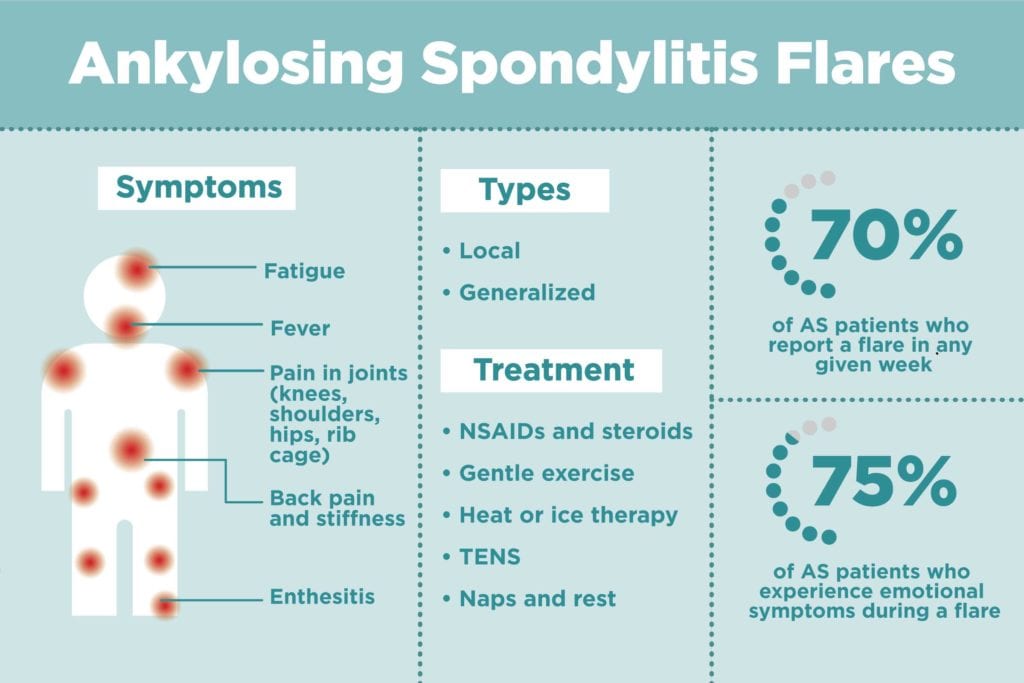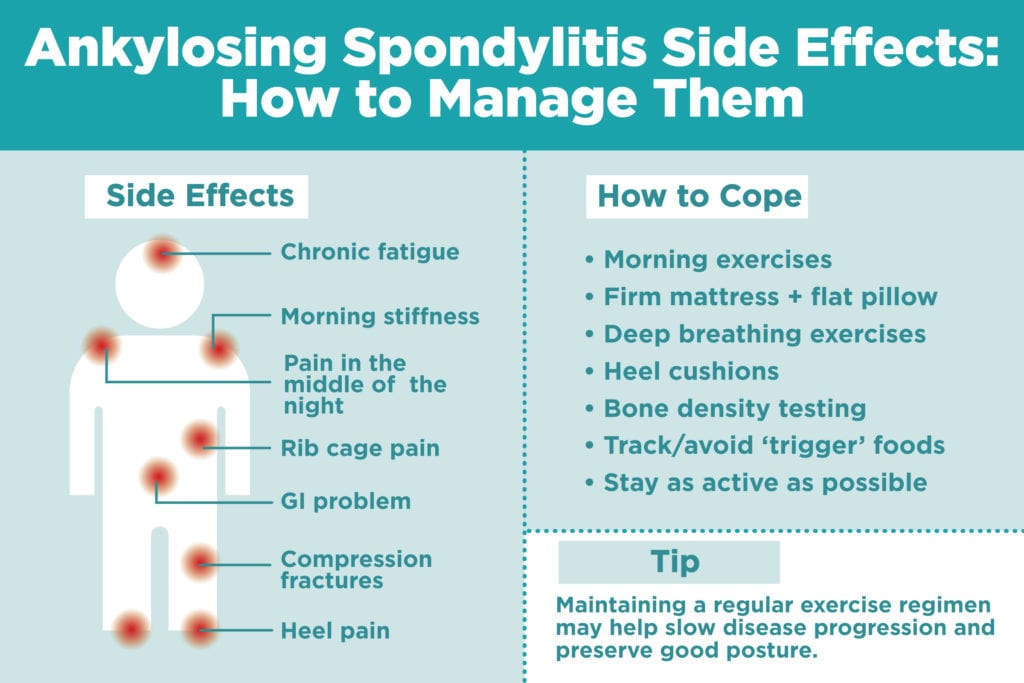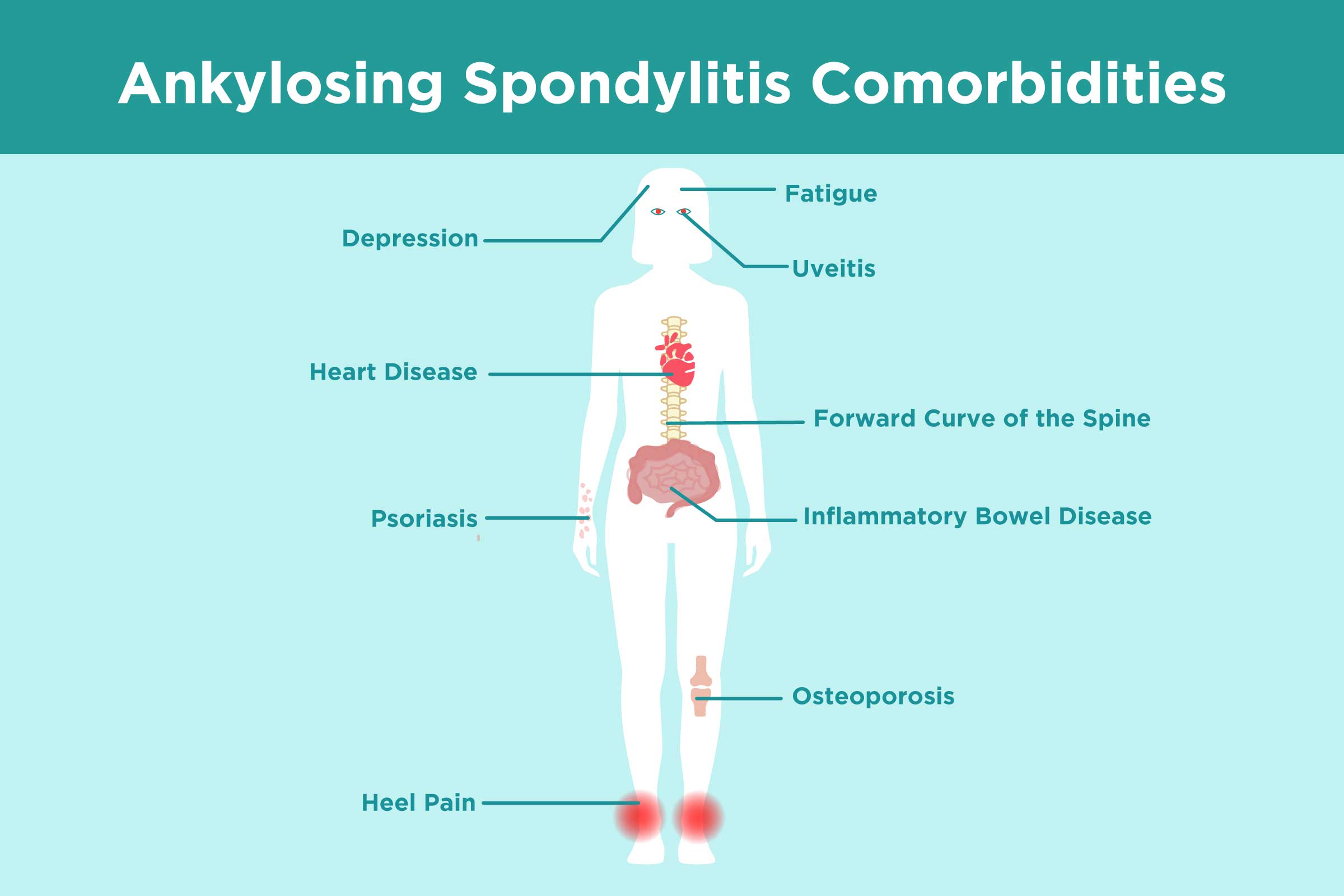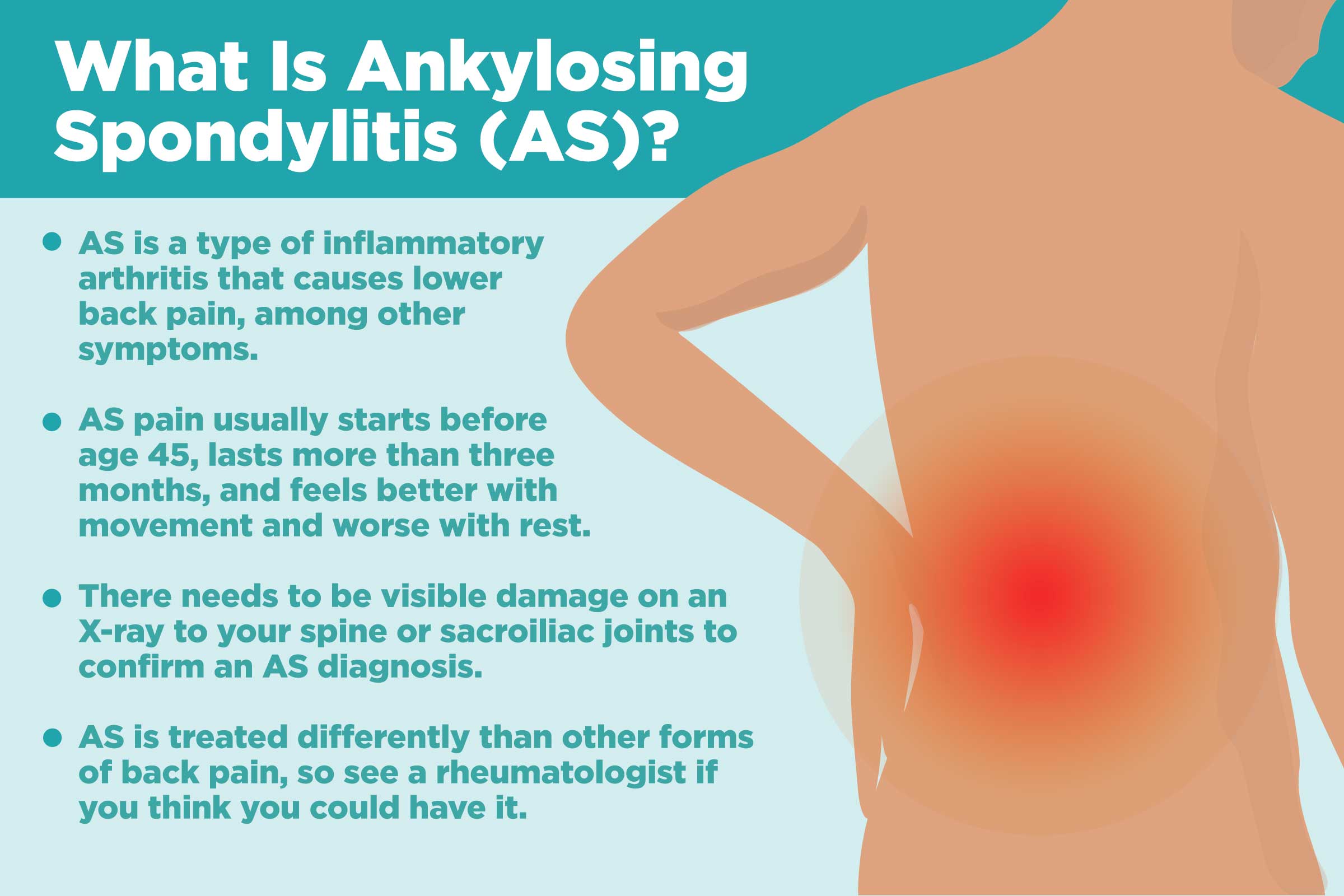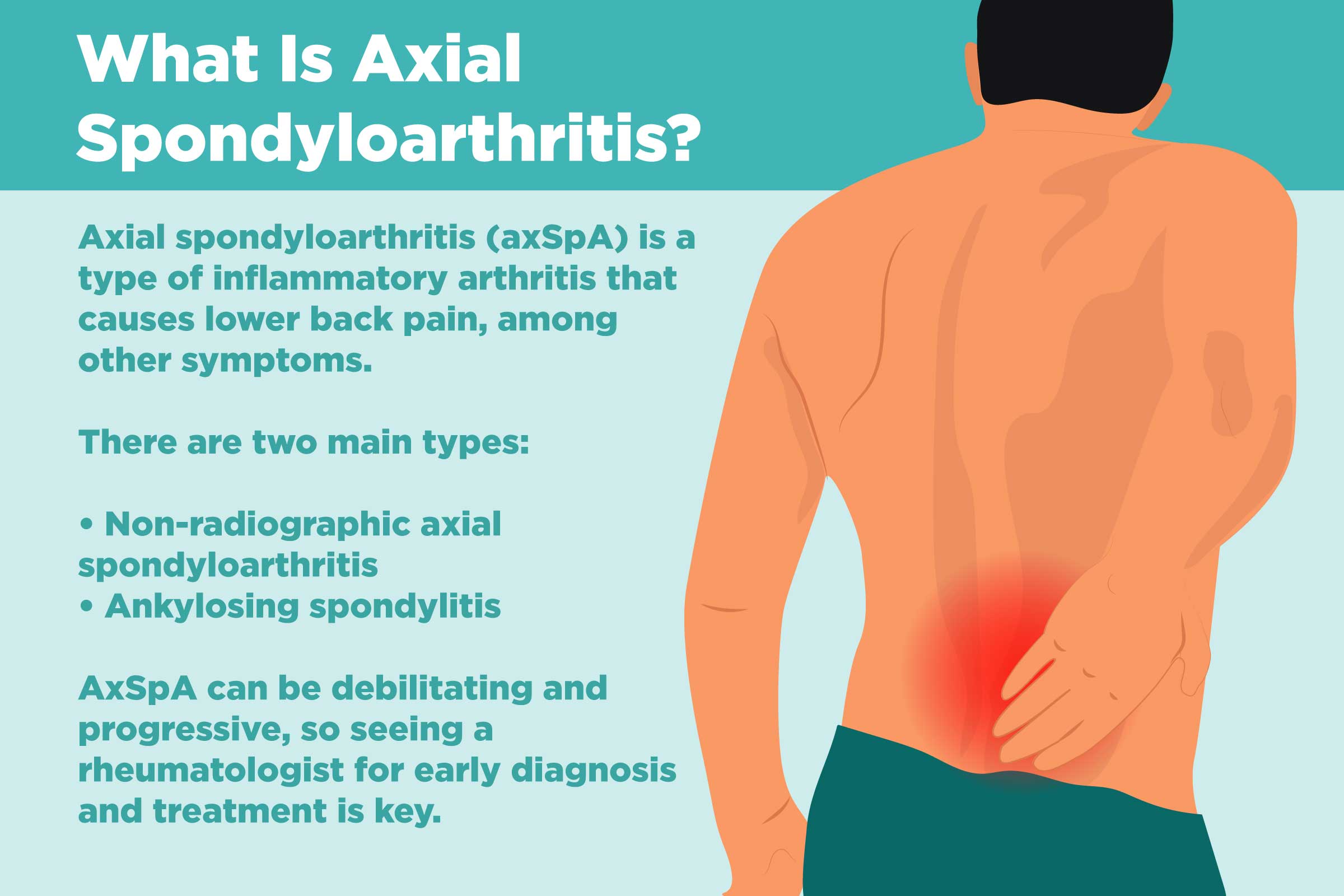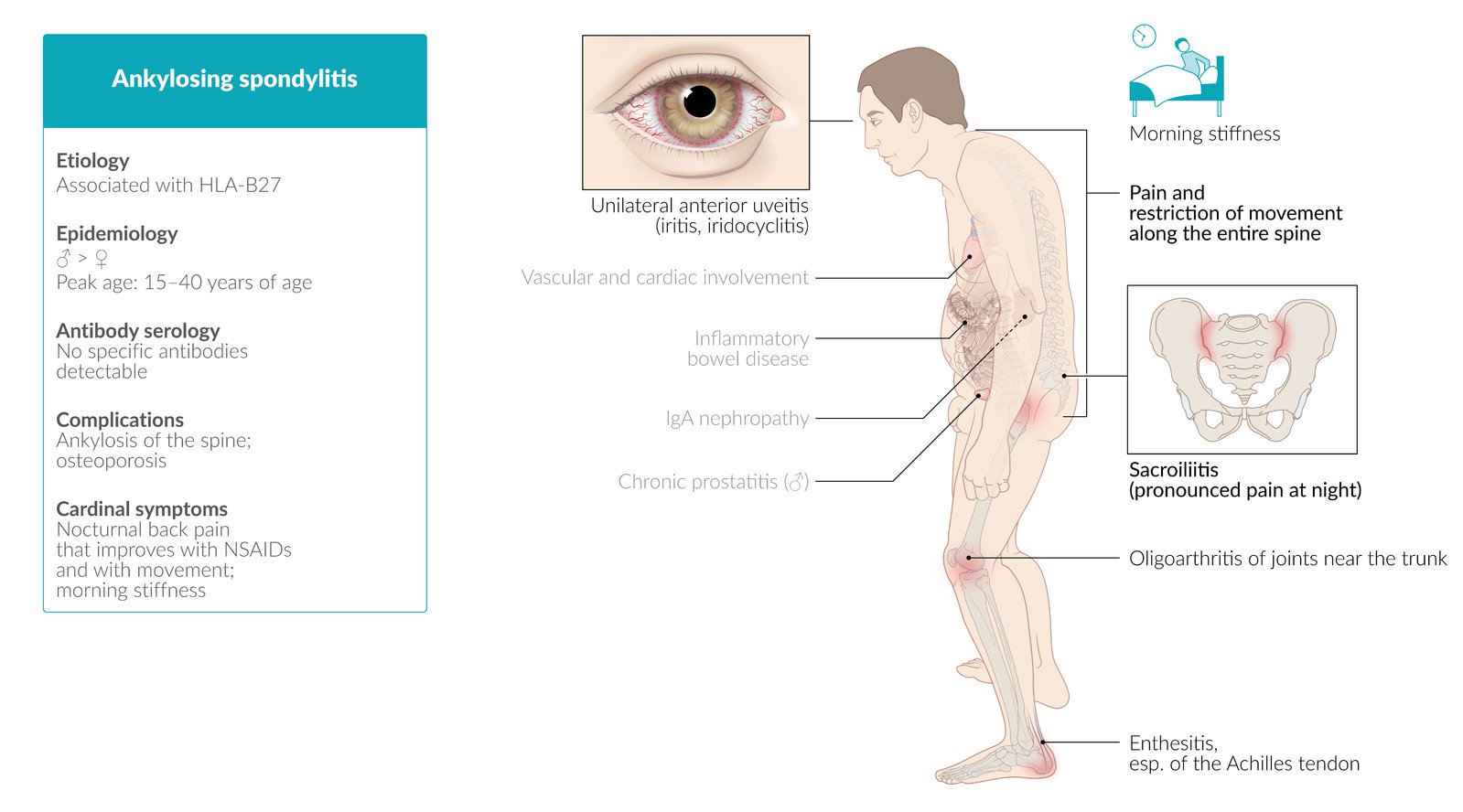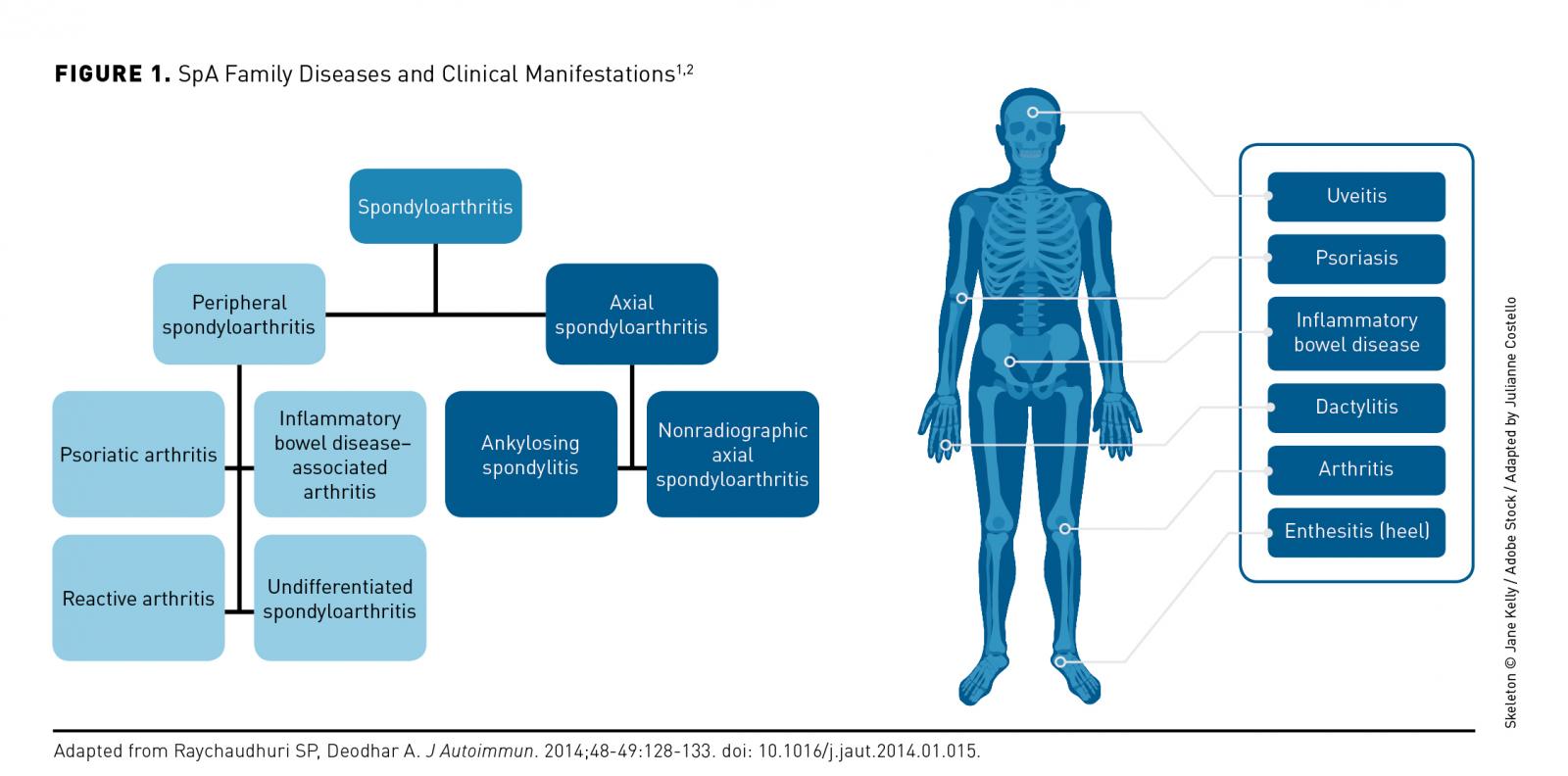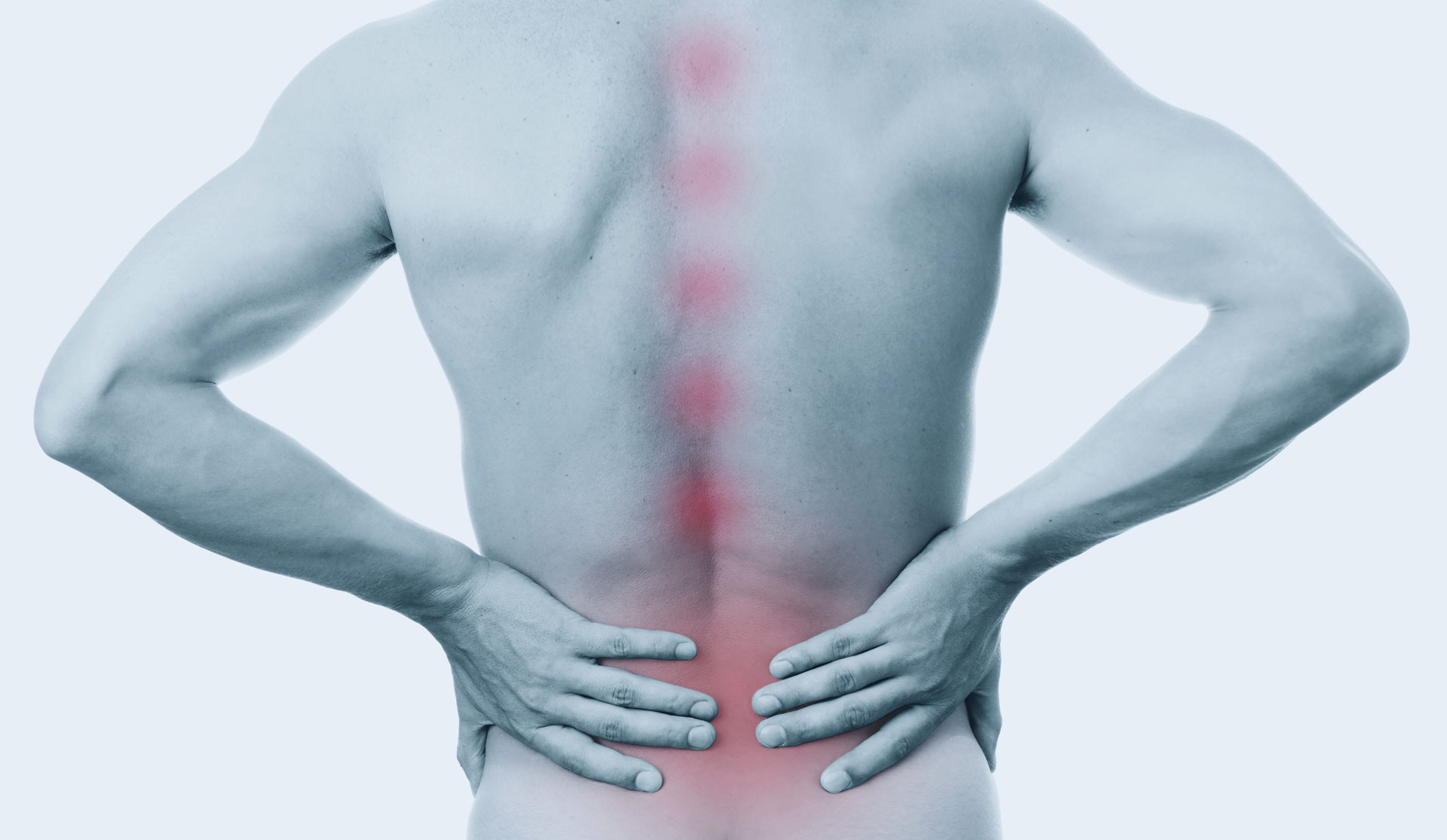
Key facts
- Ankylosing spondylitis (AS) is a kind of arthritis that mainly affects your spine.
- It often begins before the age of 40 years.
- Ankylosing spondylitis affects males more often than females.
- It’s not known what causes ankylosing spondylitis.
- There’s no cure for ankylosing spondylitis, but medicines can help manage your symptoms.
What is ankylosing spondylitis?
Ankylosing spondylitis (AS) is a kind of arthritis that mainly affects the joints and ligaments of your spine (back bone). ‘Ankylosing’ means stiff and ‘spondylo’ means vertebra.
It can also affect other large joints, like your hips and shoulders. Ankylosing spondylitis can also cause problems in your:
- eyes
- skin
- bowel
- lungs
Ankylosing spondylitis symptoms usually begin before the age of 40 years.
What are the symptoms of ankylosing spondylitis?
The symptoms of ankylosing spondylitis tend to come and go. The symptoms can also vary in severity between people.
The more common symptoms involve pain and stiffness in your spine. The inflammation usually starts in the sacroiliac joints (where your pelvis meets your spine).
Symptoms may include:
- stiffness in your back, neck or buttocks, which may be worse in bed at night
- other joint pain
- pain in tendons and ligaments, such as in your chest wall, soles of your feet, or heels
Typically, ankylosing spondylitis symptoms:
- last for longer than 3 months
- include morning stiffness and night pain
- improve with physical activity — and don’t improve with rest

An illustration showing the difference in anatomy between a normal spine, and one with ankylosing spondylitis.
What causes ankylosing spondylitis?
The cause of ankylosing spondylitis is not yet fully understood.
But doctors believe that genetics may play a role, because ankylosing spondylitis tends to run in families. Also, 9 out of 10 people with ankylosing spondylitis have the same gene, called human leucocyte antigen B27 (HLA-B27).
When should I see my doctor?
If you have lower back pain or other signs that could be ankylosing spondylitis, you should see a doctor. They can help you get a diagnosis and start treatment.
How is ankylosing spondylitis diagnosed?
Your doctor will talk to you and examine you. They may arrange for you to:
- have an x-ray
- have blood tests to look for inflammation markers
- see a rheumatologist (doctor who specialises in bone, joint and muscle problems)
How is ankylosing spondylitis treated?
At the moment, there’s no cure for ankylosing spondylitis, so treatment aims to improve your quality of life. This includes:
- controlling the inflammation
- managing your symptoms — such as pain and stiffness
- improving your physical functioning — so you can take part in social and work activities
- stopping progressive damage to your bones
- lowering your chance of complications
Your doctor will recommend you:
- stop smoking (if you smoke)
- exercise
- use non-steroidal anti-inflammatory drugs (NSAIDs) to help with pain
If you have ankylosing spondylitis, your doctor may suggest that you see a physiotherapist. They will suggest different types of exercise to:
- strengthen your back
- encourage movement in the spine
- reduce pain
Your specialist doctor may also give you other types of medicines to manage the inflammation, pain and stiffness. These can include:
- corticosteroid injections
- so-called ‘biological disease-modifying anti-rheumatic drugs’ (bDMARDs)
Can ankylosing spondylitis be prevented?
As we don’t know exactly what causes ankylosing spondylitis, you can’t stop it occurring.
There are many treatments that can help you manage your ankylosing spondylitis symptoms.
Complications of ankylosing spondylitis
Up to 3 in 10 people with ankylosing spondylitis get acute uveitis (inflammation of the eye). If this happens, your doctor will refer you to an ophthalmologist (specialist eye doctor).
If you develop a painful watery eye, you should see a doctor immediately.
Other complications are:
- poor balance
- reduced mobility
- osteoporosis
- heart complications
Over time, you may also develop an abnormal posture.
